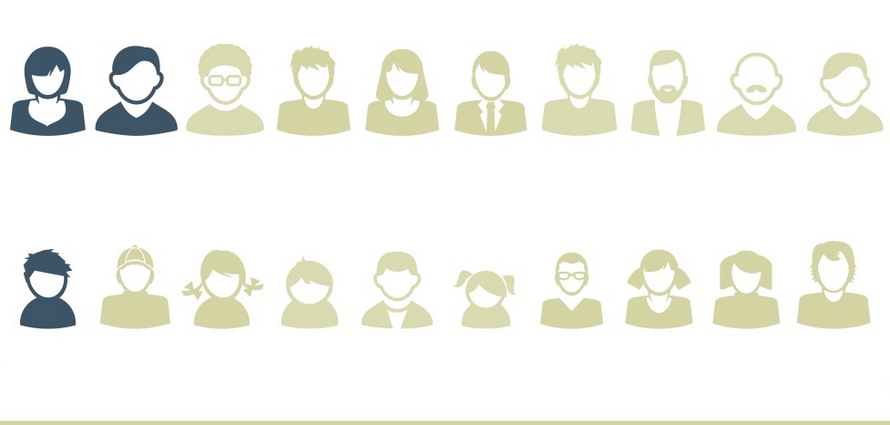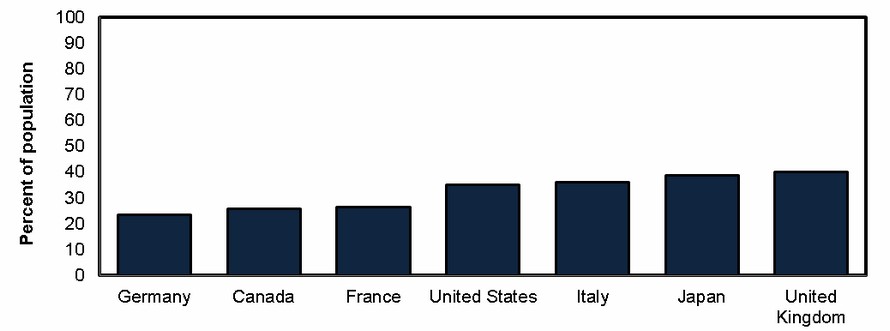Health Status of Canadians 2016: Report of the Chief Public Health Officer - What is influencing our health? - Physical activity
What is influencing our health?
Physical activity
In 2013, just over 2 in 10 adults and 1 in 10 children and youth met the Canadian Physical Activity Guidelines (see Figure 1)Footnote 1.

Physical activity can improve health, lower the risk for many chronic health conditions and contribute to the healthy development of children and youth.Footnote 2-5 Physical activity can be measured in many different ways which can make it challenging to report on. In this section, physical activity is measured based on comparisons to the Canadian Physical Activity Guidelines, energy expenditures and amounts of physical activity per day or week.
Did you know?
Individuals who meet the recommended guidelines for physical activity can still be at risk for developing poor health if a significant amount of their waking hours are spent not being active.Footnote 11,Footnote 12
Over time
Data on physical activity related to the Canadian Physical Activity Guidelines are only available for 2009, 2011 and 2013. While rates have fluctuated, there is no evident trend yet.Footnote 1
By age and sex
In 2013, the proportion of people who met the Canadian Physical Activity Guidelines differs by age and sex. It is important to note that different age groups have different guidelines.Footnote 1
| Age groups | Men/Boys | Women/Girls |
|---|---|---|
| 5 to 11 years | 18% | 8% |
| 12 to 17 years | 8% | 3% |
| 18 to 39 years | 35% | 30% |
| 40 to 59 years | Table 1 footnote a | 18% |
| 60 to 79 years | 13% | 11% |
By income
In 2005, Canadians with a personal income of over $60,000 spent 9% of their leisure time being active while Canadians with a personal income below $30,000 spent 7% of their leisure time being active.Footnote 6
Indigenous populations
Data on physical activity in Indigenous populations are not directly comparable to the data described above as they are not measured against the Canadian Physical Activity Guidelines and were collected in a different manner. In 2008/2010, First Nations on-reserve were asked about their levels of activity.Footnote 7
- 62% of children aged 6 to 11 years were considered active.
- 49% of youth aged 12 to 17 years were considered active.
- 25% of adults aged 18 years and older were considered active.
In 2007-2010, First Nations off reserve and Métis were more likely to report being active during their leisure time than other groups.Footnote 8
| First Nations off reserve | 56% |
|---|---|
| Métis | 61% |
| Inuit | 51% |
| Non-Indigenous | 54% |
Data presented in this table are adjusted by age. Indigenous populations tend to be younger than non-Indigenous populations which can affect the ability to compare data across groups. |
|
International comparison
International comparisons are based on inactivity as measured by energy expenditure rather than meeting/not meeting specific guidelines. In 2010, Canada ranked as the second least inactive country for people 18 years and older and for youth ages 11 to 17.Footnote 9 Different age groups had different definitions of inactivity (see Figure 2)Footnote 9.
a) Adults 18 years and older

Text Equivalent
Bar charts showing the percent of people who are inactive in G7 countries in 2010.
- Canada = 25.9%
- United States = 35%
- United Kingdom =40%
- France = 26.4%
- Germany = 23.4%
- Italy = 35.9%
- Japan = 38.7%
b) Youth 12 to 17 years

Text Equivalent
Bar charts showing the percent of people who are inactive in G7 countries in 2010.
- Canada = 77.3%
- United States = 72.6%
- United Kingdom = 79%
- France = 88.1%
- Germany = 83.1%
- Italy = 91.8%
- Japan = not available
Notes to the reader
- For the data reported above, meeting Canada's Physical Activity Guidelines is defined as follows: Children and youth (5 to 17 years) should do at least 60 minutes of moderate-to-vigorous activity every day. Adults (18 to 79 years) should do at least 150 minutes of moderate-to-vigorous activity per week in periods of activity that are at least 10 minutes long.Footnote 1
- Indigenous populations consist of First Nations, Métis and Inuit.
- Data on First Nations living on-reserve are from the First Nations Regional Health Survey (2008/10). People were asked to report the frequency and duration of physical activities they had undertaken in the previous year. These activties were reported as a metabolic equivalent value.Footnote 13 For all age groups, those with energy expenditures of less than 1.5 kcal/kg/day were considered to be inactive; those with energy expenditures between 1.5 kcal/kg/day and 2.9 kcal/kg/day were considered to be moderately active; and those with energy expenditures of 3 kcal/kg/day or greater were considered to be active.Footnote 7
- Data on First Nations living off-reserve, Métis and Inuit are from Statistics Canada's Canadian Community Health Survey. People were considered to be physically active if they had an average energy expenditure of 3 kcal/kg/day or more, moderately active if they had an average energy expenditure of 1.5-2.9 kcal/kg/day and inactive if they had an average energy expenditure of less than 1.5 kcal/kg/day.Footnote 8
- G7 countries include seven of the world's industrialized countries, namely the United States, Japan, Germany, France, the United Kingdom, Italy and Canada, that form an informal discussion group and economic partnership.
- Internationally, inactvity was measured as less than 150 minutes of moderate intensity or 75 minutes of vigorous-intensity physical activity per week for adults 18 years or older; and less than 60 minutes of moderate- to vigourous-intensity physical activity daily for ages 11 to 17 years.Footnote 10